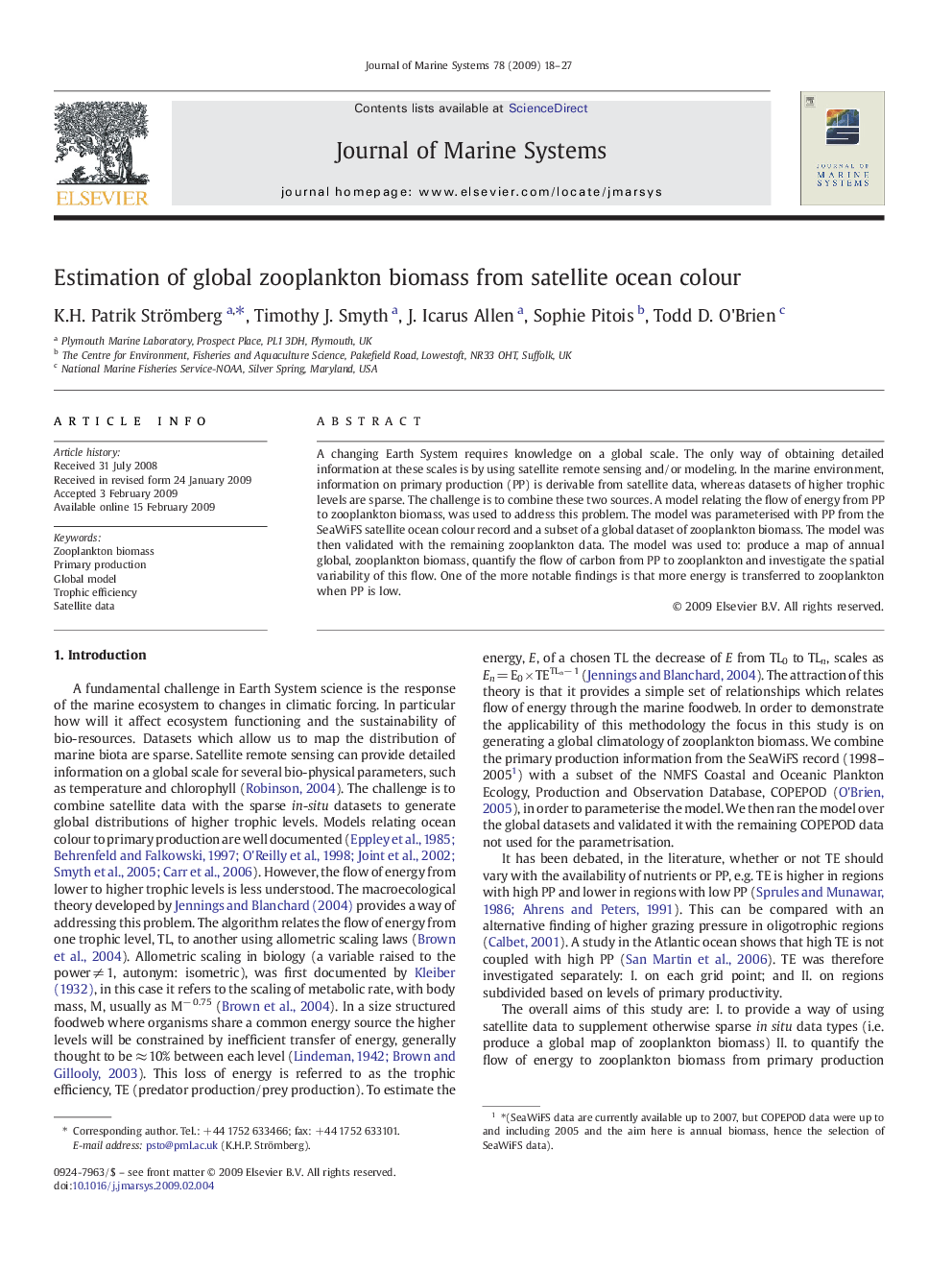| Article ID | Journal | Published Year | Pages | File Type |
|---|---|---|---|---|
| 4548862 | Journal of Marine Systems | 2009 | 10 Pages |
A changing Earth System requires knowledge on a global scale. The only way of obtaining detailed information at these scales is by using satellite remote sensing and/or modeling. In the marine environment, information on primary production (PP) is derivable from satellite data, whereas datasets of higher trophic levels are sparse. The challenge is to combine these two sources. A model relating the flow of energy from PP to zooplankton biomass, was used to address this problem. The model was parameterised with PP from the SeaWiFS satellite ocean colour record and a subset of a global dataset of zooplankton biomass. The model was then validated with the remaining zooplankton data. The model was used to: produce a map of annual global, zooplankton biomass, quantify the flow of carbon from PP to zooplankton and investigate the spatial variability of this flow. One of the more notable findings is that more energy is transferred to zooplankton when PP is low.
